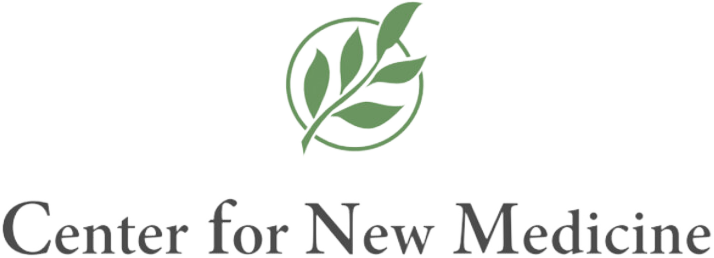When a suspicious lump or breast change is discovered, many women send for a breast ultrasound. Naturally, one of the most common and anxiety-inducing questions patients ask is “What percentage of breast ultrasounds are cancer?” At the Center for New Medicine in Irvine, CA, we believe knowledge is power—especially when it comes to your health. Understanding what breast ultrasounds can and cannot detect is key to making informed decisions about your breast health and cancer prevention.
What Percentage of Breast Ultrasounds Are Cancer?
So, what percentage of breast ultrasounds are cancer? According to current research, only about 2–7% of breast ultrasound findings result in a cancer diagnosis. The majority of breast lumps or abnormalities detected during an ultrasound are benign—often cysts, fibroadenomas, or other non-cancerous tissue changes. This is encouraging news for many women, but it also opens up an important conversation about the limitations of conventional screening.
It’s helpful to understand that ultrasounds are typically used as a follow-up tool, not a primary screening method. When a mammogram shows an area of concern or a physical exam finds a lump, an ultrasound is often used to get a clearer image—especially in women with dense breast tissue.
Still, many women worry about what percentage of breast ultrasounds are cancer. While the number remains relatively low, it’s not just about the percentage—it’s about what’s being missed.
The Problem with Missed or Late Diagnoses
Despite technological advances, many breast cancers are still diagnosed late—or worse, go undetected altogether. Dense breast tissue, in particular, can mask tumors on both mammograms and ultrasounds, making early detection extremely difficult. This raises a critical concern: What percentage of breast ultrasounds are cancer that could be missed or misclassified?
Studies show that dense breasts can lower the sensitivity of mammograms to as little as 48%, and ultrasounds may not catch all types of cancer either, especially those without clear structural changes.
So, when we ask, “What percentage of breast ultrasounds are cancer?” it’s important to realize that some cancers aren’t counted in that percentage because they were missed—either misdiagnosed or discovered only after they progressed. That’s why it’s essential to choose a screening method that offers greater sensitivity, accuracy, and comprehensive insight into breast tissue function—not just structure.
The QT Breast Scan: A More Accurate Approach
At the Center for New Medicine, we’ve chosen to offer an advanced imaging technology called the QT Breast Scan, which significantly outperforms traditional imaging methods. If you’ve ever wondered what percentage of breast ultrasounds are cancer, you might also wonder how many go undetected. The QT scan is here to fill that diagnostic gap.
Unlike mammograms or ultrasounds, the QT Breast Scan uses QT imaging, a novel, non-invasive technique that captures both functional and structural changes in breast tissue. It does not involve compression or radiation, making it safe, painless, and repeatable.
And the best part? The QT scan is highly accurate, especially for women with dense breasts, who often get false negatives with other screening tools.
You can learn more about the QT Breast Scan at cfnmedicine.com/qt-breast-cancer.
Beyond Statistics: A Personalized Approach
Let’s revisit our main question: What percentage of breast ultrasounds are cancer? While the average ranges between 2% and 7%, this statistic doesn’t reflect individual risk factors such as genetics, hormone levels, or personal history. That’s why at the Center for New Medicine, we take a personalized and integrative approach to breast cancer screening and prevention.
Our evaluation process doesn’t stop with imaging. We assess your entire health profile—hormone imbalances, environmental exposures, inflammation markers, immune function, and even emotional stressors—to get a full picture of your wellness and cancer risk.
This is especially important for women who feel that something isn’t right, even if their imaging results say otherwise. Just because a test comes back clear doesn’t mean the concern is unfounded. We’ve seen firsthand that listening to your intuition—and using the right tools—can lead to life-saving early detection.
Why Accuracy Matters
If you’re still asking what percentage of breast ultrasounds are cancer, you’re already doing the right thing by staying proactive. But accuracy and early detection go beyond numbers. Even one missed cancer is one too many.
That’s why so many women are turning to the QT Breast Scan as a more accurate, comprehensive, and reliable tool for long-term breast health.
At the Center for New Medicine, we support women who want to go deeper than conventional tests. Whether you have dense breast tissue, a family history of cancer, or a need for peace of mind, the QT scan can give you answers without radiation or guesswork.
Final Thoughts
To summarize: What percentage of breast ultrasounds are cancer? Statistically, only 2–7%. But that doesn’t mean you’re in the clear, nor does it mean you should panic. It simply means you deserve more accurate information and more advanced technology to support your health journey.
If you want peace of mind and more accurate answers, we encourage you to learn more about the QT Breast Scan at cfnmedicine.com/qt-breast-cancer. Take control of your breast health—because early detection, especially with the right tools, saves lives.
